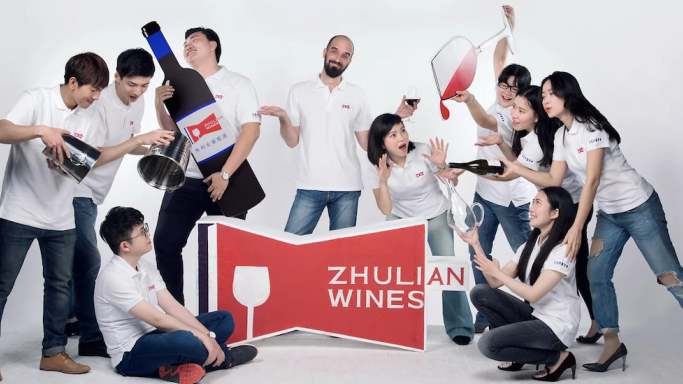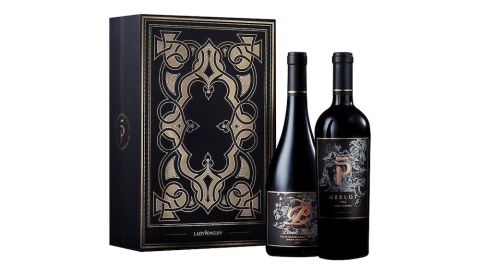After a month off, Richard’s column returns with a peek into the virtual reality of wine communication in China.
Asking who writes about wine in China is a bit like asking who eradicates pandemics in the UK; it misunderstands the fundamentals of what’s happening.
According to OIV data, China is now the fifth-biggest consumer of wine in the world. With so many wine drinkers, there must be a lot of people writing about it too, just as there are in Europe and North America.
That is the fundamental misconception. There are indeed many wine communicators in China, but they bear little resemblance to how wine media is produced and consumed in its traditional markets.
Answering the write question
In China, there are negligibly few websites, blogs or magazines about wine. Decanter and La Revue du Vin de France both looked into establishing print titles there, with no success – although their brands operate wine events in China, which is generally a much more profitable business, as do French critics Bettane + Desseauve. Twitter, Facebook and Instagram are redundant (because they are blocked), and Vivino is apparently non-existent too. In fact, all the main platforms of wine communication in Europe, America and Australasia are effectively insignificant, as is the traditional format of long-form writing.
Instead, wine communication takes place alongside the rest of Chinese daily life: inside a handful of all-important smartphone apps. WeChat and Douyin (TikTok) are the ones westerners have probably heard of, but there are many others. Written content does exist in these virtual realities, but video and live-streaming is increasingly preferred.
Those who do use websites and email newsletters to write about wine in China do so because they want to reach the rest of the world, especially Europe and North America. Vino-Joy.com is operated by Natalie Wang. Established in May 2019, it aims to bring information about the Chinese wine market in English to a mostly trade audience. Being based in Hong Kong gives her much broader access to information (ie Google) than within mainland PRC (where it is banned), although it inevitably removes her from the heart of the action.
Jim Boyce, already well known on these pages, has been writing about wine from his home in Beijing since 2007, although he likes to distance himself from the established wine trade and clearly relishes his role as an outsider, providing commentary on the wine world through his Grape Wall of China website and newsletter. Eschewing any wine certification or qualifications, he instead classifies himself as consumerist, happy to needle an industry that he sees as self-important and insular, such as by reporting on the wine trade's relative insignificance in China, for example.
Both Wang and Boyce offer very different angles on the Chinese wine world, using platforms and a language that are of primary relevance to westerners. But what about wine communication in Chinese and for Chinese?
KOLs, merchants, producers and educators
Inside WeChat, Douyin and others lurk the KOLs – key opinion leaders. These are the influencers whose opinion on wine is having the greatest impact within China. Some, Lady Penguin being the best-known example, focus only on wine, and her own-brand Chilean label (pictured below) has grown to sales of one million bottles within three years of launching. Others, such as Li Jiaqi, have no connection to wine (he primarily promotes lipsticks) but such is their reach that when they feature a specific wine while broadcasting on video platforms that link directly to big online retailers, such as JD.com and Taobao, it makes a significant impact on sales.
MW student Young Shi, author of this recent report on the 2020 harvest in Burgundy, commutes between London and Shanghai. She points out that merchants also play an important part in wine communication. She has 'witnessed them evolving so much in the past six to eight years. Their wine promotion articles are getting more and more professional and their consumers loyally stick by them because they know they will receive wine knowledge, professional masterclasses and get recommended consistently good stuff and tempting promotions from the merchant or importer in question.'
Another important source of wine information is producers themselves. Wang cites Chinese wineries such as Grace, Changyu and Silver Heights that are successful because their online communication is light-hearted, fun and avoids jargon. Furthermore, they understand the right context for their audience, referring to contemporary topics in China, or cultural touchpoints such as poetry. By comparison, blog posts that have simply been translated from English into Mandarin have little resonance. Edward Ragg MW, The Wine Advocate’s new Chinese-wine reviewer, observes that Chinese wineries now need to be more proactive to reach consumers, whereas before the anti-corruption crackdown, sales to local government officials were an easy source of income.
Ragg, along with his wife and fellow Master of Wine Fongyee Walker, are among China’s most prominent wine educators, another category that has far greater influence in China than in the West. Most of their students are non-trade wine lovers from a wide range of urban centres, and are up to 80% female. For these consumers, magazines and websites are not their primary sources; instead, chat and video apps are the first port of call.
Another educator, also a Master of Wine, is Julien Boulard (pictured above flanked by his team at Zhulian Wines), a Frenchman whose fluency in English and Mandarin gives him a unique advantage. He comments that within China, very few wine lovers are aware of international wine writers because of the language barrier, and, for the same reason, Chinese-language communicators are rarely known outside China.
Boulard estimates that 90% of wine influencers in China are educators, whereas sommeliers and writers have much less traction. China is the second-biggest international market for WSET courses, so the influence of educators is understandable. Young Shi adds that this percentage of influence is only within the subset of those already taking wine courses – whereas personalities such as Lady Penguin have no influence on top-tier consumers, she points out. Meanwhile, Jim Boyce thinks that wine educators – a group he dubs the ‘vintelligentsia’ – don’t know how to relate to normal consumers. The counterclaim is that Boyce himself has minimal influence in the Chinese wine world.
Perhaps this grousing among some wine professionals – be they educators, producers or outsiders – makes them not so different from their international cousins after all …
Will there be a Chinese Robert Parker?
With such rapidly growing interest in wine, China seems the ideal breeding ground for a new Robert Parker, a single critic that wields supreme influence.
Some of the contenders could be Li Demei, a well-established consultant who positions himself as a paternal figure to the wine industry, according to Boyce; James Suckling, who has been focusing on Asia for years, and has his own wine bar in Hong Kong; or educators such as Walker, who is increasingly known for her appearances on screen.
However, Ragg – who works for Parker’s original publication – doesn’t believe that a sole figure will ever enjoy that same scale of influence in China. Here, Boyce agrees, pointing out that wine remains a very niche interest among the Chinese, especially in comparison with the huge popularity of baiju, the local spirit.
Just as wine communication differs greatly in China, so the prospects of a Chinese uber-critic seem remote. Meanwhile, the growth in China’s wine market has slowed. For Boyce, this decline puts into question the value of formal wine education in increasing wine sales, although Boulard thinks the benefits will be evident over a much longer term, with each generation growing in knowledge, in tandem with improving living standards.
Same drink, different world
Europe may have originated wine writing, with North America following in its footsteps, but China is forging its own path. The old-fashioned style of wine writing in newspapers and magazines is meaningless there – even websites seem relatively antiquated.
Learning about this parallel universe of wine appreciation only emphasises how removed it is from the norms in the West. The same liquid might be inside the bottle worldwide, but in China, everything outside it seems radically different.


